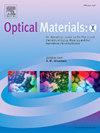The connection between the accumulation of structural defects caused by proton irradiation and the destruction of the near-surface layer of Li4SiO4 – Li2TiO3 ceramics
Q2 Engineering
引用次数: 0
Abstract
The key problem of using lithium-containing ceramics as materials of breeders for the propagation of tritium in thermonuclear reactors is phase stability, as well as the preservation of strength and thermophysical parameters of ceramics during their operation, which is accompanied by the accumulation of fission products in the near-surface layers, alongside mechanical influences from the outside. Moreover, in contrast to other types of ceramics, the presence of lithium in the composition of the samples under study leads to limitations in the use of classical analysis methods (scanning electron microscopy, energy dispersive analysis or optical spectroscopy) of structural changes caused by the accumulation of radiation damage, which requires the use of more complex methods for the assessment of the defect concentration in the structure, as well as establishing their relationship with the deterioration of strength and thermophysical parameters, playing a key role in determining the stability mechanisms and further exploitation of ceramics for tritium production. In this regard, the aim of the study is to determine the kinetics of changes in the near-surface layer of two-phase Li4SiO4 – Li2TiO3 ceramics associated with the accumulation of structural distortions caused by irradiation, as well as their relationship with strain embrittlement and disorder. During the studies, it was found that the accumulation of implanted hydrogen in the near-surface layer under high-dose irradiation initiates deformation distortion processes, the intensity of which depends on the ratio of components in the ceramics, according to which the optimal compositions of two-phase ceramics are ratios of components from 0.3 to 0.6. Determination of the type of defects in the composition of the damaged layer, as well as their concentration, was carried out using the electron spin resonance (ESP) method. During the studies, it was found that at low irradiation fluences, the dominant role in the accumulation of structural defects is played by vacancy defects associated with E′-centers, the formation of which is associated with structural distortions, while as the fluence grows, the structure is dominated by deformation disordering caused by the accumulation of Ti3+ defects and HC2 centers (SiO4 3-), the concentrations of which have a clear dependence on the phase composition of the ceramics.
质子辐照导致的结构缺陷积累与 Li4SiO4 - Li2TiO3 陶瓷近表层破坏之间的联系
在热核反应堆中使用含锂陶瓷作为氚传播的增殖体材料的关键问题是相稳定性,以及陶瓷在运行过程中强度和热物理参数的保持问题,在运行过程中,伴随着裂变产物在近表面层的积累,以及来自外部的机械影响。此外,与其他类型的陶瓷相比,所研究样品的成分中含有锂,这就限制了使用传统分析方法(扫描电子显微镜、能量色散分析或光学光谱学)来分析辐射损伤积累所造成的结构变化,这就需要使用更复杂的方法来评估结构中的缺陷浓度,并确定它们与强度和热物理参数恶化之间的关系,这在确定稳定机制和进一步利用陶瓷生产氚方面起着关键作用。为此,本研究旨在确定两相 Li4SiO4 - Li2TiO3 陶瓷近表层与辐照引起的结构畸变累积相关的变化动力学,以及它们与应变脆化和无序的关系。研究发现,在高剂量辐照下,植入氢在近表面层的积累会引发变形畸变过程,其强度取决于陶瓷中的成分比例,根据该比例,两相陶瓷的最佳成分比例为 0.3 至 0.6。使用电子自旋共振(ESP)方法确定了受损层成分中的缺陷类型及其浓度。研究发现,在低辐照通量下,与 E′-中心相关的空位缺陷在结构缺陷积累中起主导作用,其形成与结构畸变有关,而随着通量的增加,结构则以 Ti3+ 缺陷和 HC2 中心(SiO4 3-)积累引起的变形无序为主,其浓度与陶瓷的相组成有明显的相关性。
本文章由计算机程序翻译,如有差异,请以英文原文为准。
求助全文
约1分钟内获得全文
求助全文
来源期刊

Optical Materials: X
Engineering-Electrical and Electronic Engineering
CiteScore
3.30
自引率
0.00%
发文量
73
审稿时长
91 days
 求助内容:
求助内容: 应助结果提醒方式:
应助结果提醒方式:


